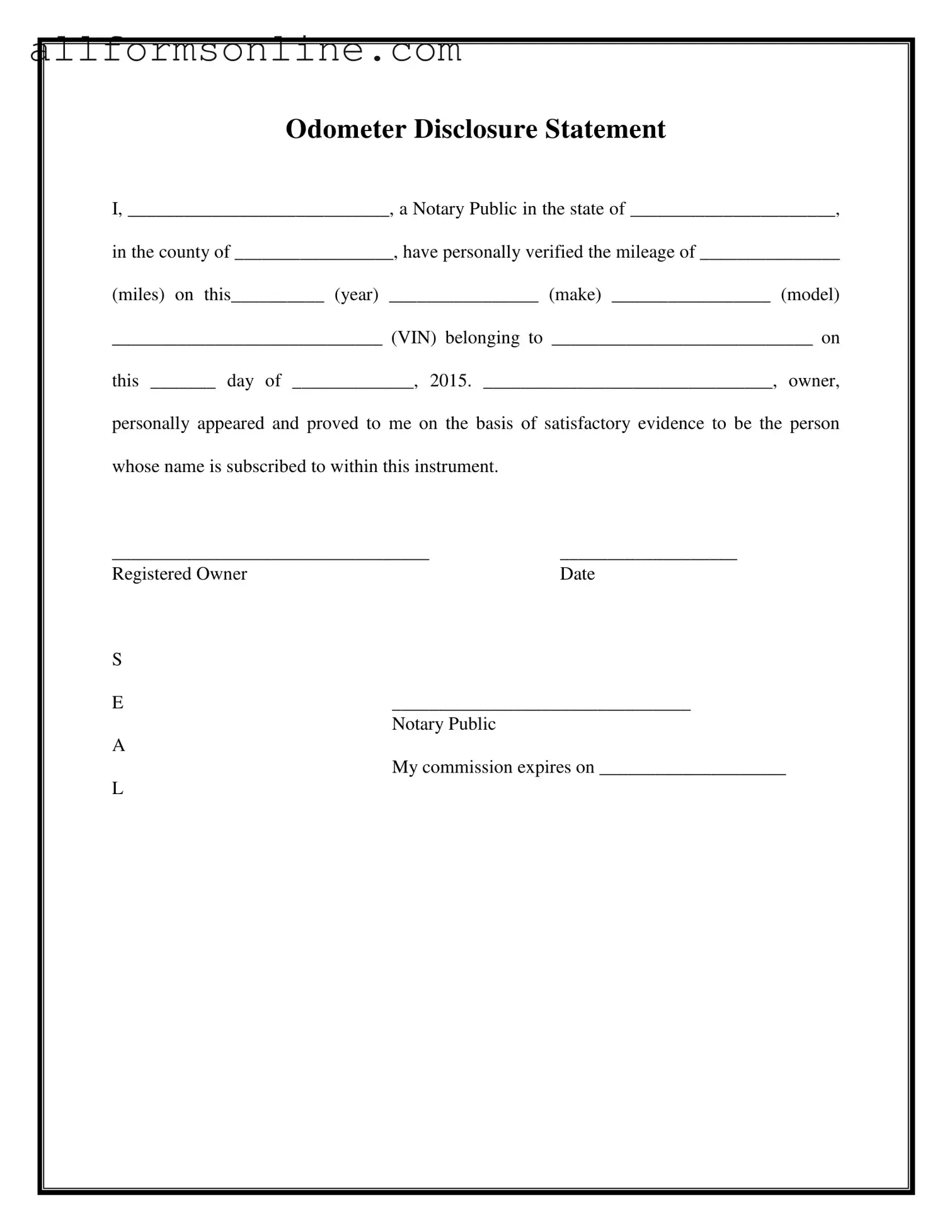What is a Notarized Odometer Statement form?
The Notarized Odometer Statement is a legal document used during the sale or transfer of a vehicle. It verifies the mileage on the vehicle's odometer at the time of the sale. This form is signed by the vehicle owner and notarized to ensure its authenticity, providing assurance to the buyer regarding the accuracy of the mileage reported.
Why do I need a Notarized Odometer Statement?
This statement is crucial for preventing odometer fraud. When buying or selling a vehicle, it is important to confirm that the mileage is accurate. A notarized statement protects both the buyer and seller by providing a record that can be referenced in case of disputes about the vehicle’s mileage in the future.
Who can complete the Notarized Odometer Statement?
The form must be completed by the vehicle owner, who will provide the necessary details such as mileage, vehicle make, model, and VIN. After filling out the form, a Notary Public must witness the signature. The notary verifies the identity of the owner and ensures that the document is signed voluntarily.
What information is required on the form?
Key information includes the owner's name, the vehicle's mileage, year, make, model, and VIN. Additionally, the notary will need to record their name, commission expiration date, and county of notarization. This information collectively helps to establish a clear record of the vehicle’s odometer reading at the time of transfer.
How do I find a Notary Public?
Notaries can often be found in banks, law offices, or public libraries. Many notaries also offer mobile services, coming to your location to notarize documents. It’s advisable to call ahead to ensure they can assist you and to confirm any fees associated with their services.
Is the Notarized Odometer Statement required in all states?
Requirements can vary by state. Some states mandate a notarized odometer disclosure for vehicle sales, while others may not. It is important to check your state's specific regulations regarding vehicle sales to ensure compliance and to understand if this form is necessary for your transaction.
